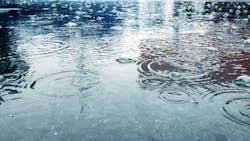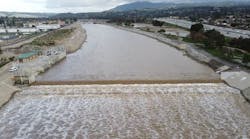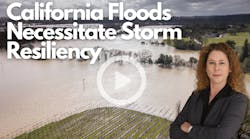A new study sheds light on how much more damage atmospheric rivers cause when they are sequential, according to a press release from the University of Florida.
Analyzing 30 years of weather and economic loss data, the team discovered that when atmospheric rivers occur sequentially, the economic damage more than triples the expected losses compared to standalone events. These findings surpass initial expectations, showing the negative impacts of consecutive atmospheric river occurrences.
These elongated regions are responsible for transporting a large portion of water vapor outside the tropics. Their strength varies, with the average river carrying water vapor roughly equivalent to the flow at the mouth of the Mississippi River. In extreme cases, they can transport up to 15 times that quantity. Upon landfall, they release moisture as rain or snow.
While atmospheric rivers contribute approximately half of California’s annual precipitation and replenish the state’s snowpack, they can also be associated with extreme events that lead to catastrophic damage.
The study, published Jan. 19 in Science Advances, highlights atmospheric rivers’ crucial role in providing up to half the region’s annual water while emphasizing the challenge of managing substantial water delivery in short time spans.
“When it rains, it can take a while for that rain to move through a watershed naturally, and in many places, we also trap water in reservoirs for use during dry conditions for irrigation and other purposes,” said Katy Serafin, co-author and geographer for the University of Florida. “Emergency and water managers are constantly balancing flood risks with water shortage needs, especially in states like California where you move between exceptionally dry and exceptionally wet years.”
The researchers noted a significant trend in median flood losses but emphasized a wide range around each median.
“For example, prior research found that a category 3 or 4 event could produce losses between $10,000 to over $1 billion across the state,” Serafin said. “A category 5 event could produce losses between about $5 million to over $1 billion.”
Based on anecdotal evidence and recent events, the team hypothesized that consecutive atmospheric river events might be more damaging than isolated, single events — contrary to the traditional categorization of losses.
“We’re generally really worried about individual large events that cause hazards and how these events might change in the future – this applies not only to atmospheric rivers but also to hurricanes, which maybe we’re a little more familiar with here in Florida,” Serafin said.
The researchers hope their findings can provide a new perspective to help the broader public better prepare for flood risks by clearly communicating the compound nature of these risks.






